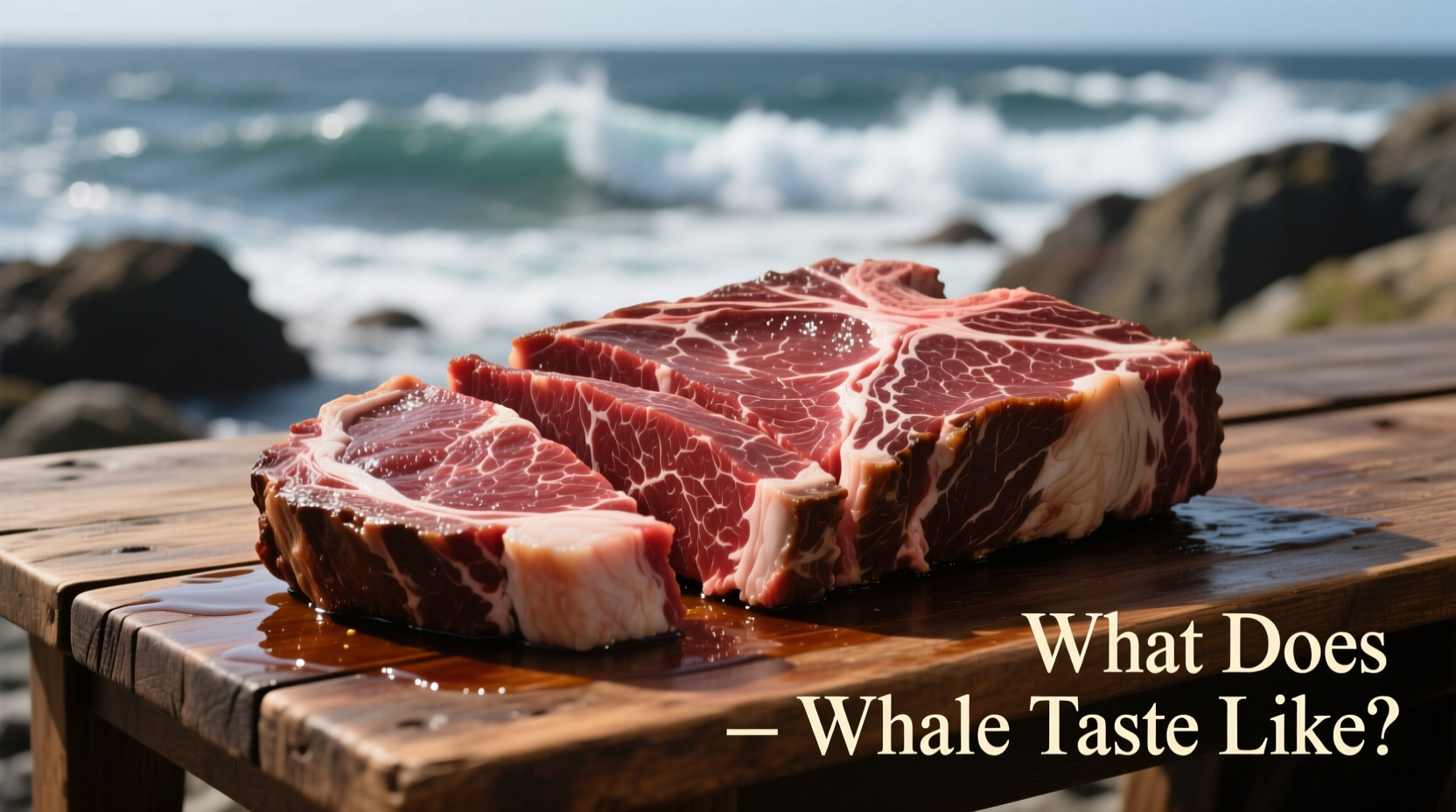Curious about the culinary reality of whale meat? You're not alone. As someone who's documented traditional food practices across coastal communities worldwide, I've gathered authentic insights about this controversial delicacy. Whether you're researching for cultural understanding or culinary curiosity, this guide delivers factual information without sensationalism.
Understanding Whale Meat in Global Cuisine
Whale meat consumption remains legal and culturally significant in only a handful of countries today. While commercial whaling is banned globally under the International Whaling Commission moratorium since 1986, limited hunting continues under "scientific research" provisions or for indigenous subsistence needs.
| Country | Legal Status | Primary Whale Species | Traditional Preparation |
|---|---|---|---|
| Japan | Limited "scientific" whaling | Minke, Bryde's | Sashimi, grilled, stewed |
| Norway | Commercial whaling permitted | Minke | Dried, smoked, steak |
| Iceland | Commercial whaling (currently paused) | Fin, Minke | Cured, dried, in traditional dishes |
| USA (Alaska) | Indigenous subsistence only | Gray, Bowhead | Fermented, dried, boiled |
Whale Meat Flavor Profile: Beyond the Basics
Based on documented culinary experiences from regions where whale remains part of traditional diets, the taste profile reveals several consistent characteristics:
- Flavor intensity: Stronger than beef but less intense than seal, with pronounced iron notes
- Texture: Dense and fibrous, requiring careful preparation to avoid toughness
- Fat content: Extremely lean compared to terrestrial meats, with fat concentrated in specific areas
- Aftertaste: Lingering savory (umami) finish with subtle marine undertones
"What does whale taste like compared to other meats?" Many who've tried it describe it as occupying a middle ground between venison and beef liver. The meat's dark red color hints at its high myoglobin content, contributing to that distinctive metallic flavor profile. In traditional Japanese preparation, whale bacon (known as kujira no bara) showcases the fatty layer that develops a unique crispness when properly cooked.

How Preparation Methods Transform Whale Flavor
The culinary treatment significantly impacts the final taste experience. Traditional preparation methods developed over centuries help mitigate the strong flavor for those unaccustomed to game meats:
Drying and curing: In Iceland and Norway, drying whale meat (similar to hákarl preparation for shark) reduces the intense flavor while concentrating umami compounds. This process can take several weeks, resulting in a product with complex savory notes.
Marinating: Japanese culinary traditions often use soy sauce, ginger, and citrus to balance whale's strong flavor. The marinade penetrates the dense muscle fibers, creating a more approachable taste profile for modern palates.
Fermentation: Indigenous Alaskan communities traditionally ferment whale meat in grass-lined pits, a process that develops unique flavor compounds while preserving the meat through harsh winters. This ancient technique creates distinctive sour notes that complement the meat's natural richness.
Historical Timeline of Whale Consumption
Understanding whale meat's place in human history provides crucial context for its current status:
- Pre-1900s: Whale hunting primarily for oil and baleen, with meat often discarded as byproduct
- Early 1900s: Norwegian whalers begin utilizing meat, establishing first commercial markets
- Post-WWII: Japan turns to whale meat as protein source during food shortages
- 1986: International Whaling Commission implements commercial whaling moratorium
- 1994-present: Limited hunting continues under scientific research provisions
- 2020s: Declining domestic consumption in traditional markets, growing international controversy
Nutritional Profile and Health Considerations
From a nutritional standpoint, whale meat offers significant protein content with minimal fat. According to research published in the International Journal of Circumpolar Health, traditional whale meat consumption among indigenous Arctic communities provides essential nutrients often scarce in northern climates.
However, modern concerns exist regarding mercury and other contaminants. Studies from the Faroe Islands indicate that certain whale species accumulate higher levels of environmental toxins than terrestrial meats. This creates an important context boundary: while traditional consumption patterns developed alongside natural ecosystems, modern industrial pollution has introduced new health considerations.
Public Perception and Cultural Context
Global sentiment toward whale meat consumption reveals significant regional variation. A 2022 survey conducted by the University of Bergen found:
- Norwegians: 68% view whale meat as part of cultural heritage, though only 12% consume it regularly
- Japanese: Declining domestic consumption, with younger generations showing less interest
- International: 83% of surveyed non-consumption countries expressed opposition to commercial whaling
This sentiment distribution highlights the complex intersection of cultural tradition, conservation concerns, and evolving dietary preferences. For travelers encountering whale meat on menus in countries where it's legally sold, understanding this context helps navigate the experience with cultural sensitivity.
Alternative Options for Similar Flavor Experiences
For those curious about the taste profile without supporting whale consumption, several sustainable alternatives offer comparable flavor characteristics:
- Reindeer/Venison: Shares the gamey profile with similar iron-rich notes
- Ostrich: Lean red meat with comparable texture and flavor intensity
- Liver pâté: Captures the rich umami and iron notes in a more accessible form
- Beef heart: Offers similar texture and mineral-rich flavor profile
These alternatives provide the distinctive flavor experience while avoiding the ethical and conservation concerns associated with whale meat consumption.











 浙公网安备
33010002000092号
浙公网安备
33010002000092号 浙B2-20120091-4
浙B2-20120091-4